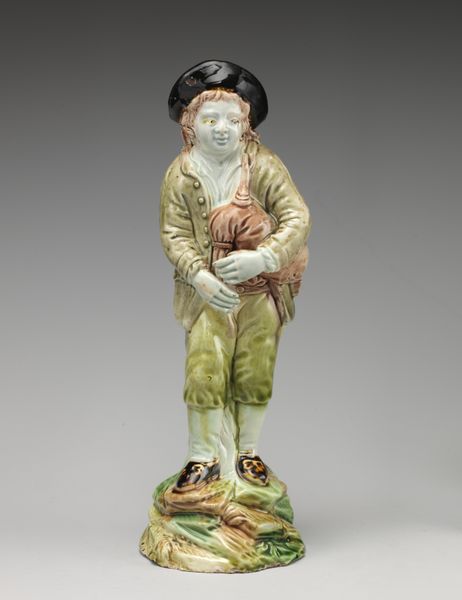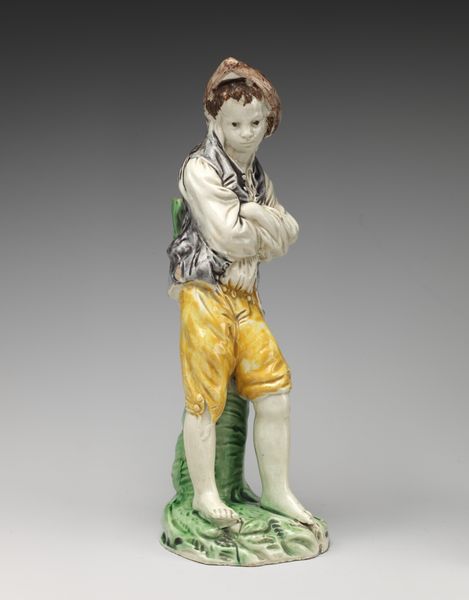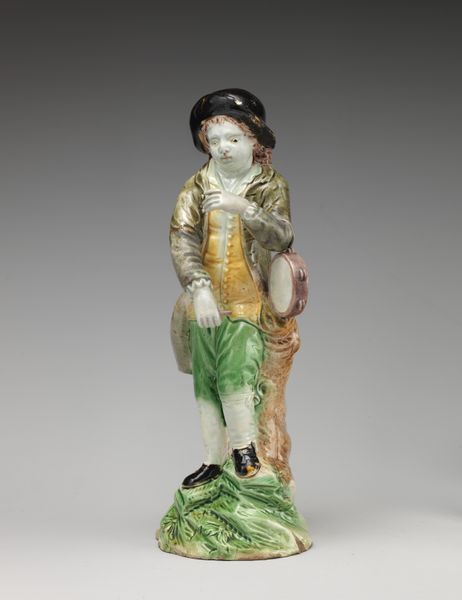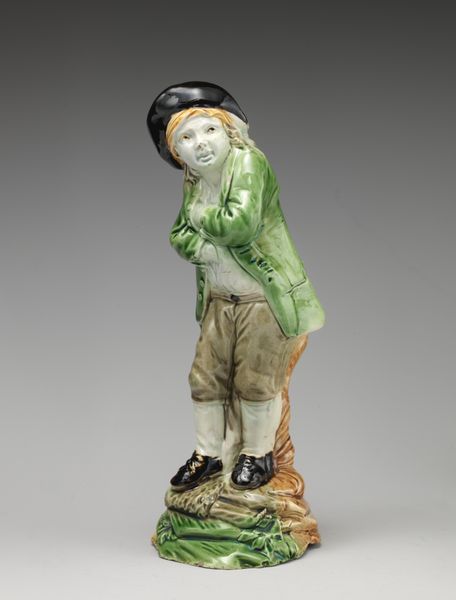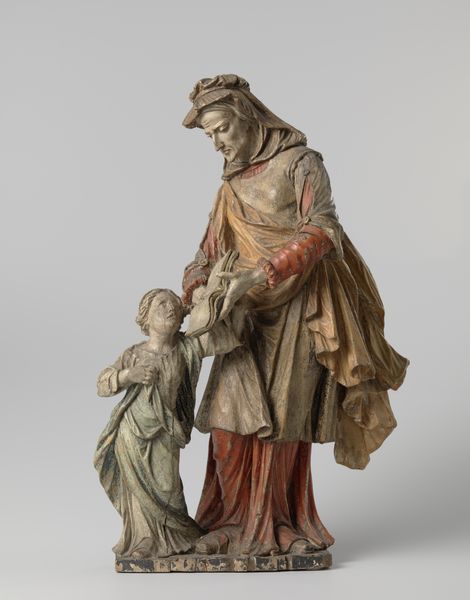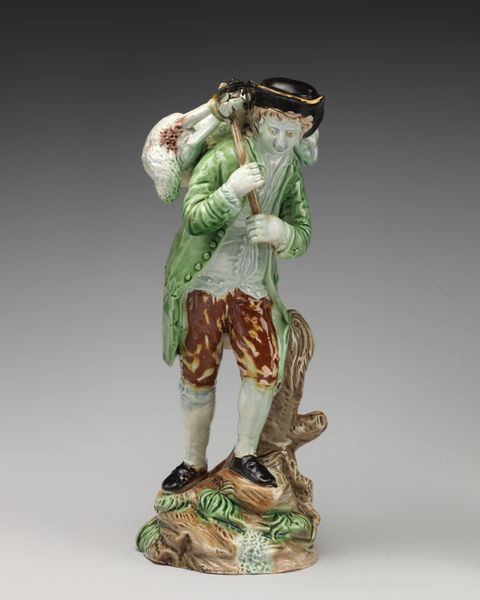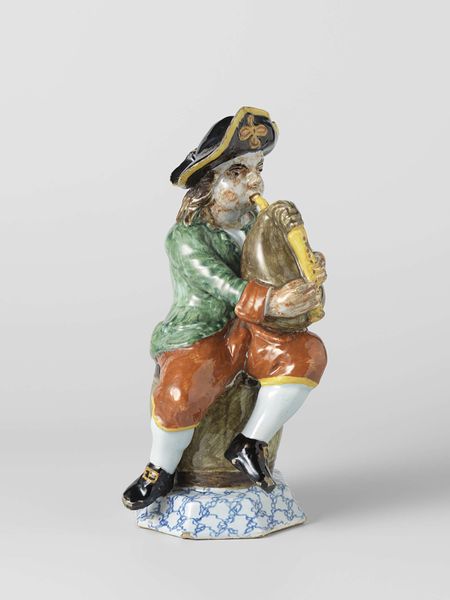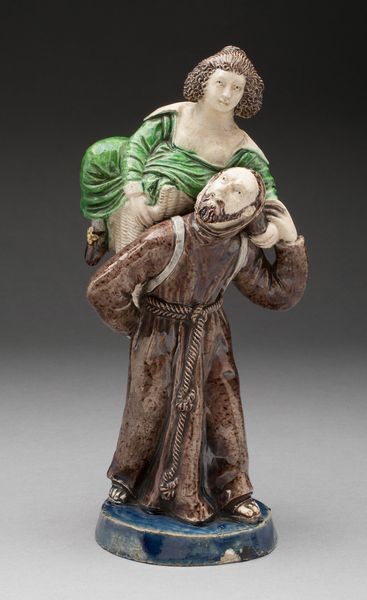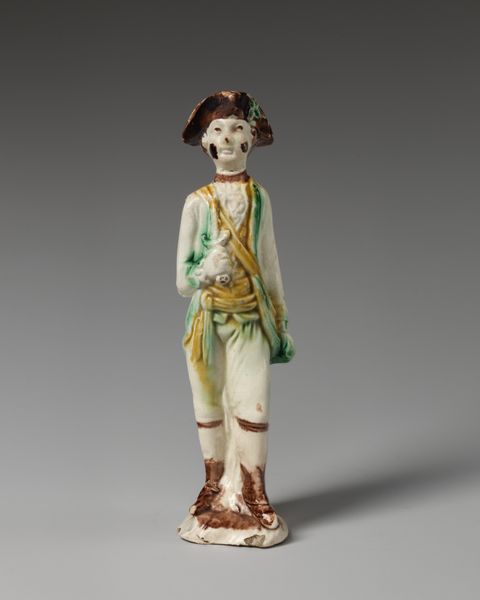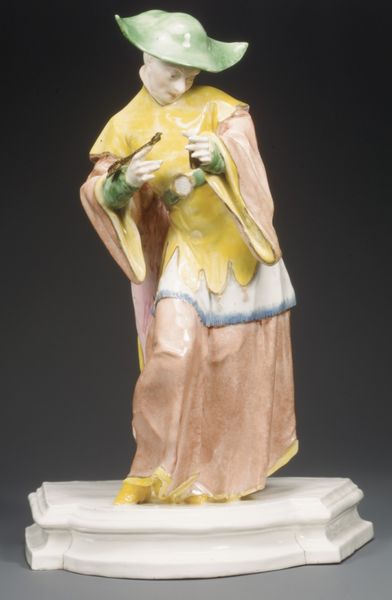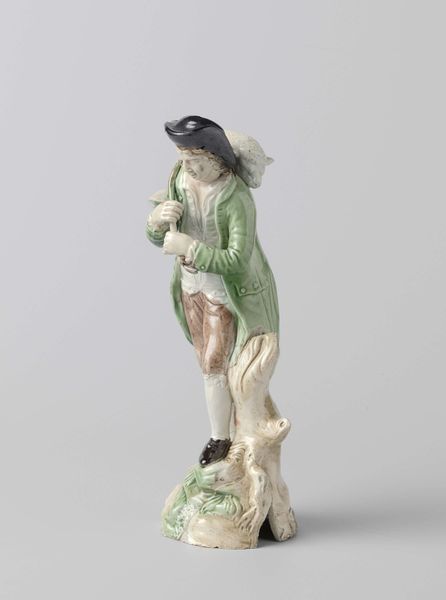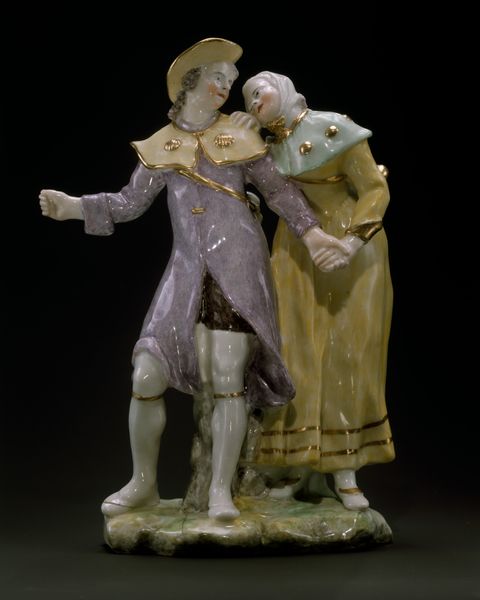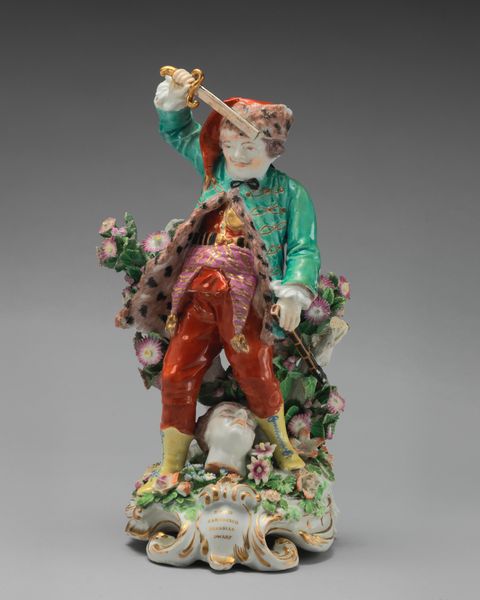
ceramic, sculpture
#
baroque
#
ceramic
#
figuration
#
sculpture
#
genre-painting
#
decorative-art
Dimensions: 22 × 8.9 × 7.5 cm (8 5/8 × 3 1/2 × 2 15/16 in.)
Copyright: Public Domain
Editor: Here we have "The Triangle Player," a ceramic sculpture dating to the early 17th century. It's currently at the Art Institute of Chicago. The figure seems kind of melancholic, a bit downcast. What can you tell us about this artwork? Curator: Indeed. Look closely at how the ceramic’s glazed surfaces capture light and shadow, notice the way it defines the character’s emotional presence. He represents something of the itinerant musician, a familiar figure from that era. The triangle itself carries connotations; music often symbolizing harmony, but here perhaps tinged with a sense of fleeting joy. Have you considered the theatrical elements present in Baroque art and their implications here? Editor: Theatrical? Is that green drape also significant, a prop, or is it something else entirely? Curator: Yes, the drape, the hat, all of it contributes to a specific performative persona. What else could it suggest beyond the obviously performative aspect of music? Think about it as something shielding the individual’s real emotional state. Green traditionally suggests hope or renewal. Here, does it seem optimistic? Editor: Hmmm… not really? Perhaps that’s why I read melancholy in it initially. It’s almost like a forced cheerfulness. So the ceramic acts like a time capsule of shared cultural knowledge. Curator: Exactly! It speaks volumes about how people understood their roles and expressed themselves in that period. We decode shared visual languages, passed down through generations, consciously or not. Now what are we learning from this particular musician? Editor: I think I now appreciate how objects embed memory, like how the seemingly simple act of playing music signifies layers of cultural meaning. Curator: It’s this ability to bridge the gap between past and present that makes examining cultural symbols so rewarding.
Comments
No comments
Be the first to comment and join the conversation on the ultimate creative platform.
